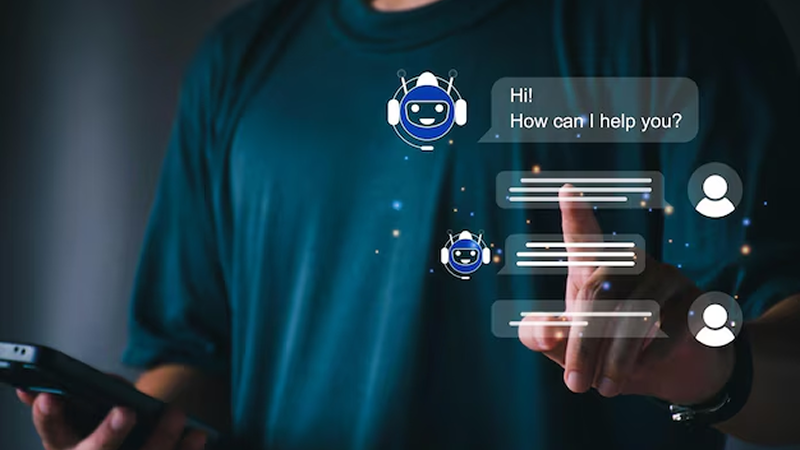How Real-World Testing Reveals What Your AI Chatbot Misses

Chatbots powered by AI have quickly become the norm in customer service and online interactions. From banking to business, they now handle millions of conversations daily. Businesses anticipate that these bots will offer seamless and intuitive interactions while reducing costs and improving customer satisfaction. But the reality often falls short of these expectations. This article delves into why bot testing in the real world is essential. Despite all the intelligent algorithms, they often get it wrong when interacting with real users. We’ll show how AI chatbot blind spots arise and how crowdtesting for AI can dramatically improve performance and reliability.
Why AI Can’t Fully Evaluate Itself
Even the most advanced AI systems lack the type of perspective that humans use to assess the quality of their communication. Although AI is capable of creating responses and even grading some of them, it still lacks something that humans have: a human point of view. Automated script-based AI chatbot testing is prone to overlooking real user behavior.
Famous Failures That Automation Missed
Let’s look at some real cases where automated chatbot QA failed:
- Microsoft’s Tay chatbot was released on Twitter and began tweeting offensive messages within hours. Automated evaluations never picked up the biases in the training data. Microsoft had to shut down the service and it became a public relations disaster for them.
- Facebook’s M tried to offer personalized help via Messenger. Despite extensive testing, users quickly abandoned it due to vague or irrelevant responses.
- Air Canada’s chatbot failed to handle date changes during COVID-19. While automation passed all internal tests, users bombarded support due to confusing replies.
Each of these issues shows the critical need for AI chatbot human testing in real environments, not just synthetic ones.
Key Areas Where Chatbots Struggle in the Wild

Let’s break down the specific ways AI chatbots often stumble once they go live—and how real-world checks reveal these weaknesses.
Understanding Diverse Language Patterns
People don’t always speak in textbook English. Slang, typos, and dialects throw off even the most advanced bots. That’s why assessing multilingual chatbots and conducting diverse user testing is essential.
Handling Edge Cases and Ambiguity
“What’s your return policy if I ordered from Italy but want to return it to France?” That’s an edge case. Bots often falter here unless user input testing exposes such rare but impactful scenarios.
Emotional Intelligence and Tone Detection
Picking up sarcasm, frustration, or happiness remains a gigantic challenge. A bot parroting “I understand” in a complaint, without real empathy, is fuel for the fire. Voice and text chatbot testing detects such tonal blind spots.
Context Retention in Longer Conversations
Users expect bots to remember context, even after a few turns. But most bots struggle after five or more messages, breaking the flow. Real users quickly spot this, even if internal monitoring doesn’t.
Cultural or Regional Nuances
A joke or a phrase that is effective in the U.S. will be insulting to Japanese users. Unless there is diverse user testing, such cultural landmines are easily overlooked.
User Satisfaction: The Emotional Factor
Numbers don’t capture feelings. Chatbot usability testing might show a high task completion rate, but users may still feel confused or frustrated. This is where human testing for chatbots shines—capturing the unquantifiable.
Mini Case Studies: Each Problem in Action
To bring these points to life, let’s take a quick look at how each of these issues has played out in the real world:
- A retail chatbot failed to recognize regional payment methods—users in India couldn’t complete purchases.
- A banking bot misunderstood the word “cool” as a temperature query rather than a sentiment.
- A travel bot gave awkward responses when users expressed frustration about flight delays.
Each of these issues was invisible during automated checks but quickly surfaced through real-world chatbot testing.
How Real-World Testing Fills the Gaps

Automated tests check for logic—but human testing for chatbots captures the unpredictable, emotional, and nuanced nature of actual user behavior.
Captures a Wider Range of Behaviors
Users ask questions in thousands of ways. Scalable chatbot testing allows you to see patterns that no script can anticipate.
Understands Frustration and Confusion
Only real humans can express confusion or happiness in subtle forms. This feedback loop is vital to improving the chatbot user experience.
Identifies Bias and Data Gaps
Does your bot prefer one language style over another? Is it dismissive toward certain accents? AI virtual assistant quality assurance must include chatbot feedback loop mechanisms that identify and address these biases.
Enables Iterative Improvements
Real feedback allows teams to continuously tweak and improve responses. This iterative model is key for maintaining high chatbot ROI.
Offers Qualitative Experience Reviews
Testers can tell you if your bot feels helpful, annoying, or tone-deaf—something no metric can provide.
Emulates Real Scenarios
By simulating actual user journeys—abandoned carts, complaints, and follow-ups—managed chatbot testing uncovers critical friction points.
Why Crowd Testing Is Superior to Limited In-House Testing
When it comes to assessing AI chatbots, crowd testing introduces more diversity, speed, and realism than traditional in-house QA ever could. Crowdsourced testing for AI uses a large, diverse pool of human testers to simulate real-world user interactions. It beats in-house tests on almost every metric that matters.
Language and Background Diversity
With testers from various regions, multilingual chatbot testing becomes truly effective. You get feedback on tone, clarity, and cultural appropriateness in real-world settings.
Real Devices, Real Environments
Instead of lab conditions, testers use their personal phones, laptops, and networks—just like real customers. This adds a layer of AI chatbot quality assurance that lab tests can’t replicate.
Faster, Parallel Testing
You can test thousands of scenarios simultaneously, dramatically reducing time-to-launch.
Discovering the Unexpected
Your team may never think to ask, “What happens if the user writes an entire query in emojis?” But a crowd tester might—and expose a surprising vulnerability.
Simulating Full User Journeys
From landing on the homepage to finalizing a purchase, testers trace real user flows. This allows for better usability testing and deeper insights into chatbot QA. That’s exactly how crowd testing improves AI chatbots—by exposing flaws in tone, logic, and context that only real users can catch.
Business Impact of Better Chatbot Testing

Let’s explore how a stronger QA process, using an ‘army’ of real humans, directly translates to better business outcomes—from happier customers to higher ROI.
Happier Customers
When bots handle real questions with empathy and context, customers stick around. This boosts loyalty and satisfaction.
Fewer Support Escalations
Better bots mean fewer angry calls to your support team. That’s money saved and headaches avoided.
More Trust in AI Systems
Users become more comfortable with automation when it works well. Trust breeds usage, and usage breeds better data.
Better Analytics
User input testing provides more meaningful data for decisions. You’ll know which responses need tweaking and why.
Stronger Brand Image
Inclusive, respectful bots improve how people view your brand. Cultural intelligence is a subtle but powerful differentiator.
A Competitive Edge
Companies that invest in chatbot testing strategies leap ahead of those that rely solely on automation.
Operational Efficiency
With fewer errors and clearer interactions, your chatbot becomes a true productivity tool—not a liability.
Key Insight
AI is impressive, but it’s not self-aware. Relying only on automated chatbot QA means missing crucial details that real users catch instantly. Real-world bot testing, especially through crowdsourced testing for AI, reveals the gaps that machines can’t see. It adds depth, context, and emotion to your bot’s training. If you want better alignment with actual user needs and a more human-like interaction, you need to bring humans into the loop. It’s not just a tech upgrade—it’s a mindset shift. The most successful AI implementations don’t replace people—they empower them. Our crowd-powered testing finds the bugs and blind spots before your users do. Test like it’s live. Chat like it’s human. Let’s get started.

